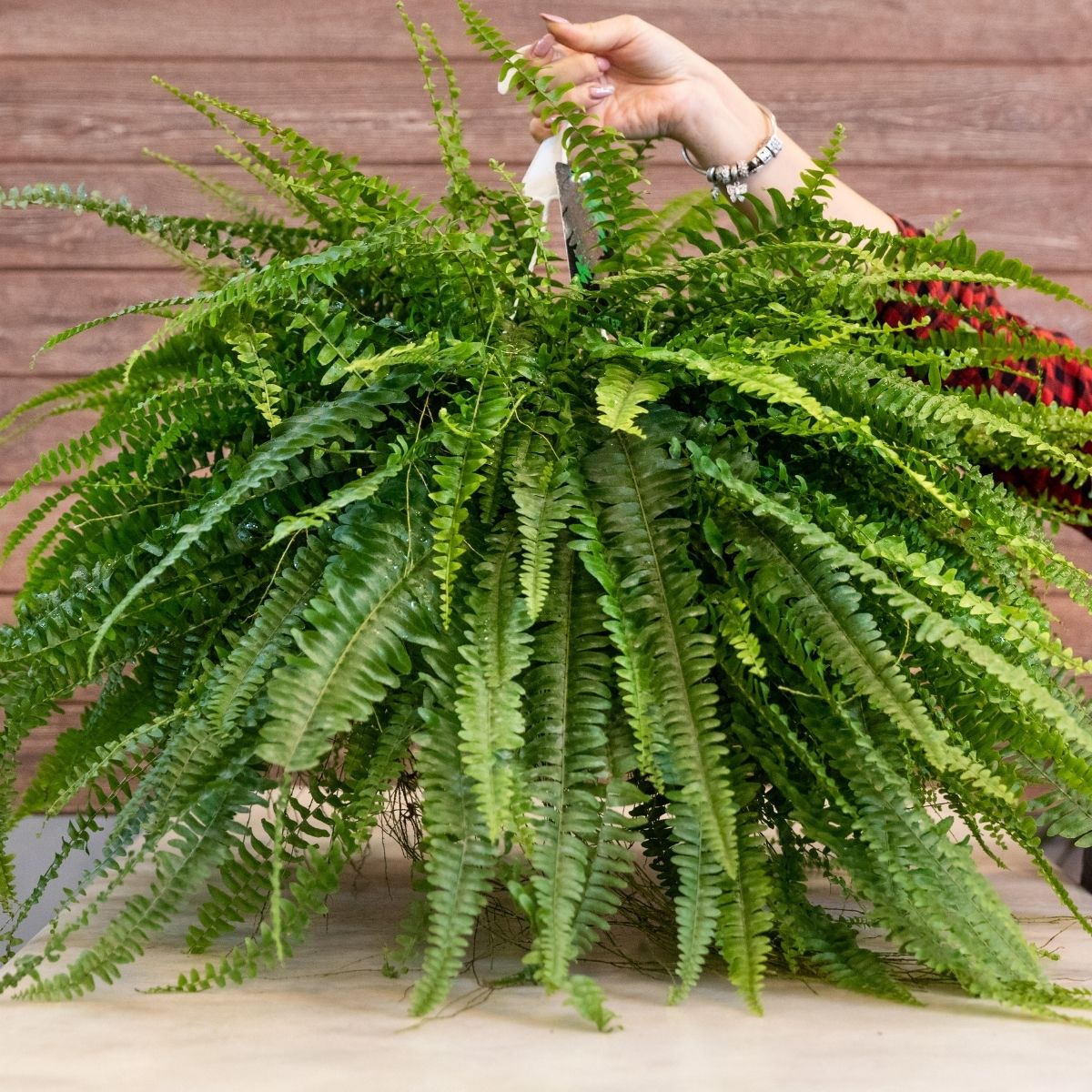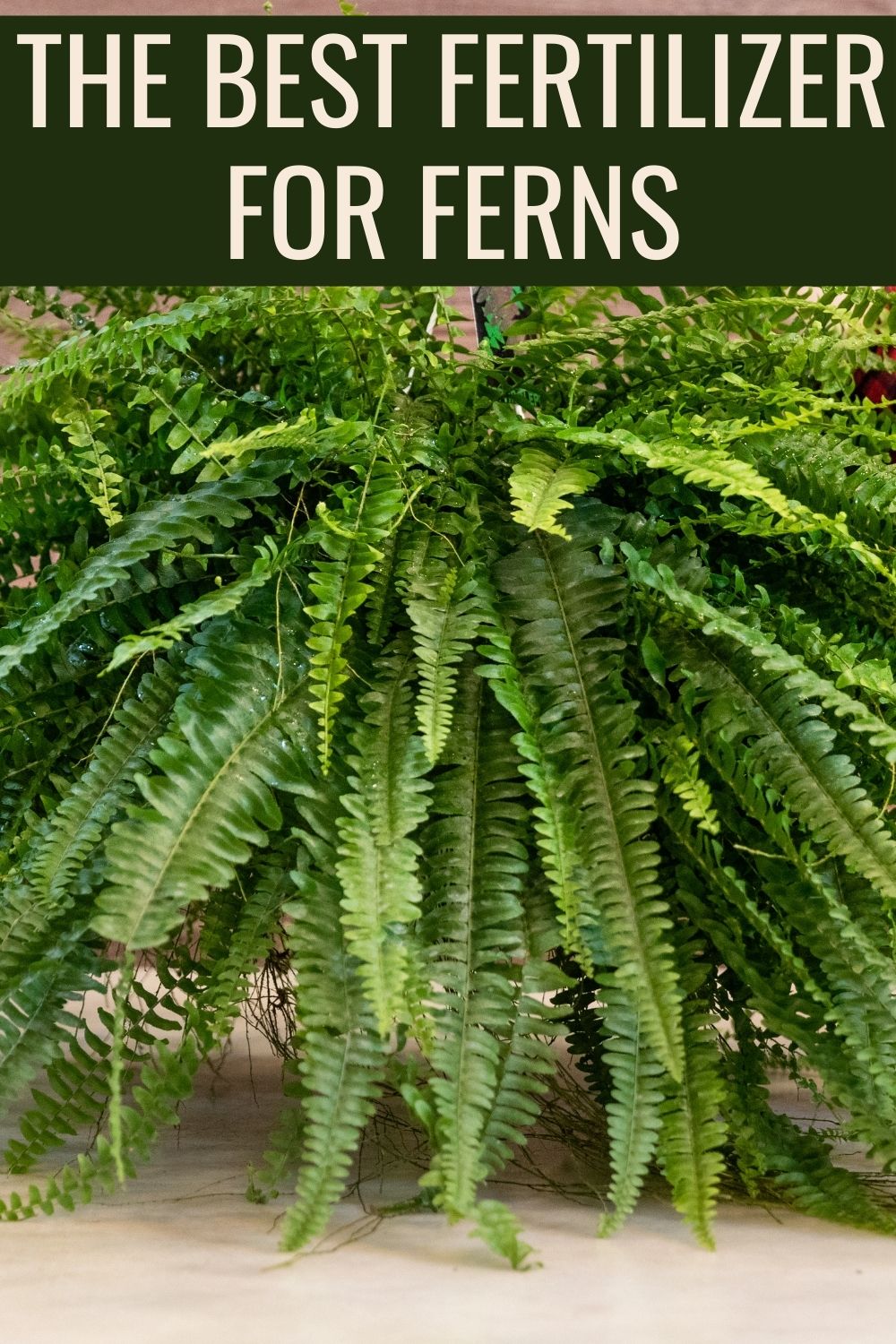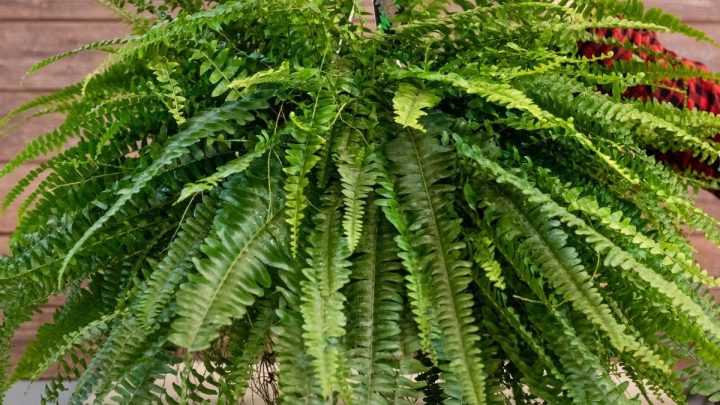 Relatively easy to grow, they thrive in moist, well-drained, shady sites where they can add a touch of drama and architecture to an otherwise dim area that is ordinarily hard to grow anything in. However, like all plants, ferns need some extra nutrients to give them a boost and to help them grow into strong, healthy specimens.
Fertilizing tropical plants like ferns requires a bit of research, as too much of one thing and not enough of another can lead to damaging the plant and may even kill it off altogether. If you’re growing ferns, whether in the garden or as a houseplant, and are looking for the best fertilizer for them, we’ve put together a list of our favorites below.
Mre fertilizing guides:
If you’re in a hurry and would like to know which fertilizer to choose for your ferns, check out our top pick here:
Relatively easy to grow, they thrive in moist, well-drained, shady sites where they can add a touch of drama and architecture to an otherwise dim area that is ordinarily hard to grow anything in. However, like all plants, ferns need some extra nutrients to give them a boost and to help them grow into strong, healthy specimens.
Fertilizing tropical plants like ferns requires a bit of research, as too much of one thing and not enough of another can lead to damaging the plant and may even kill it off altogether. If you’re growing ferns, whether in the garden or as a houseplant, and are looking for the best fertilizer for them, we’ve put together a list of our favorites below.
Mre fertilizing guides:
If you’re in a hurry and would like to know which fertilizer to choose for your ferns, check out our top pick here:
In a hurry? This is our winner!
Best Fertilizer for Ferns – Comparison Table
Best Fertilizer for Ferns – Reviews
Our Top Pick

Our rating:

Pros
- Really easy to apply – simply add to the soil, mix in, and water well
- Contains 11 essential nutrients that are slowly released into the soil for the plant to soak up
- Only needs to be applied once every six months
Cons
- As the empty nutrient shells remain visible in the soil, it can be easy to forget when it’s time to reapply

Our rating:

Pros
- Solid spikes inserted directly into the soil mean no mess or wastage
- Contains all the nutrients that your fern needs to grow healthily
- The limited, slow-release formula removes the risk of overfeeding
Cons
- These have been specially formulated for indoor use only, so can’t be used on ferns out in the garden

Our rating:

Pros
- Made from all-natural, organic ingredients
- Promotes nutrient levels within the soil to help feed your plants
- Can be used across a range of tropical plants
Cons
- The smell is quite strong, so is best made and used outside only

Our rating:

Pros
- Starts working as soon as it hits the soil, making it ideal for container-grown ferns
- Can be used on houseplants and out in the garden
- Guaranteed to not burn leaves
Cons
- Has a more regular feeding schedule than other fertilizers, so can’t be mixed into the soil and forgotten about for several months
Dr Jimz Tree Secret
Out Of Stock!
Our rating:

Pros
- Strengthens your plants and reduces the risk of disease
- The slow-release formula ensures plants have nutrients available when they need them
- Proven to add a 70% increase to beneficial bacteria within the soil after just 24 hours
Cons
- Customers have found that, as this isn’t a concentrate, you require quite a lot of fertilizer for each plant
Best Fertilizer for Ferns – Buyers Guide
What to look out for when buying fertilizer for a fern
Ferns, although easy to grow, do need to have extra nutrients added to them in order to grow strong, and healthy and to help them naturally combat any risk of disease. By applying fertilizer to your ferns, you can help them soak up these extra nutrients and ensure they can be as healthy as possible.Indoors or Outdoors
The first thing to consider when buying fertilizer for your ferns is where you are actually growing them, to begin with. Some fertilizers are only suitable for indoor use, some for outdoor use, and some can be used in both situations. Make sure to check this information before finalizing your choice.Ease of Maintenance
Another thing to give some thought to is how low-maintenance you’d like feeding your ferns to be. With today’s busy lifestyle, it’s all too easy to forget about these little jobs around the home and garden, and you may also not have the time to feed them regularly. If this is the case, look for a slow-release fertilizer that will let you add the nutrients to the soil, walk away, and let it get on with its job for several months at a time.Overfeeding
Another good reason to think about choosing a slow-release fertilizer is that, although regular feeding will result in lush frond growth, it can also weaken the roots. This isn’t only potentially damaging to the plant but can cause them to become dislodged during high winds or dry conditions. Slow-release pellets or plant spikes will feed your ferns gradually over time, and deliver the nutrients they need when they need them.Nitrogen Levels
One thing to look out for when choosing a fern fertilizer is the levels of nitrogen it contains. Too much nitrogen can cause ferns to turn brown at the edges of their leaves and can also cause burning on the tips of the roots too. To prevent this from happening, choose a fern food that has equal parts nitrogen to ammonia. This can be found by looking at the NPK levels (Nitrogen – Phosphorus – Potassium) on the fertilizer bottle, and these will read along the lines of “15-5-15”.Time of Year
Keep the time of year in mind when fertilizing your ferns as well. Ferns that are grown outside will not need feeding over winter as this is when they become dormant. Slow-release fertilizer should be given once spring arrives, and then given throughout the growing season. Once fall has come, you may choose to divide your ferns and replant them in different areas around your garden. If you are doing this, there is no need to add fertilizer to the soil, and doing so could result in brown-edged leaves or burnt roots. Ferns that are being grown indoors won’t go dormant since they are not experiencing outside temperatures, so these can be fertilized all year round. In this case, an instant-acting fertilizer may be more beneficial as the fern has a limited amount of soil available to it to draw nutrients from, and slow-release fertilizers, particularly liquid ones, may evaporate away if the soil is allowed to become too dry. However, if you prefer the idea of a slow-release plant fertilizer for your plants, then plant spikes are a great choice for ferns that are grown in containers indoors.Hanging Baskets
If your ferns are growing in hanging baskets, an instant-acting fertilizer would be a good choice as it will add the nutrients to your soil and allow your ferns to drink them up without the risk of rain slowly washing away any slow-release formulas before they’ve had a chance to be absorbed.Mimicking Natural Habitats
A fern’s natural habitat is the bottom of forest floors, where they thrive in the shade and suck up all the nutrients added to the soil from decaying leaves. These nutrients include nitrogen, phosphorus, potassium, and calcium. When buying fertilizer for your ferns, make sure that these nutrients are within the mix so you can recreate their natural feed as much as possible. By purchasing a good quality fertilizer that has all the nutrients and minerals your fern needs to grow strong, you should not only see an improvement in the overall health of your plant but will also see new growth, an increase in size and you’ll be helping to keep them disease-free.Frequently Asked Questions
How often should I fertilize my ferns?
After initially planting your ferns, it’s a good rule of thumb to wait for around 4 – 6 months before adding any fertilizer to the soil. Once this time has passed, a slow-release plant fertilizer can be given to your ferns. The timescales for reapplication of slow-release fertilizers can vary depending on the brand, but generally tend to be somewhere between two and six months.Why are the edges of my fern’s leaves turning brown?
Brown leaf edges on ferns are caused by nitrogen levels in the soil being too high. High nitrogen levels don’t only cause brown edges on leaves, but can also burn the tips of your fern roots. If you’ve noticed brown, burnt-looking edges on your fern, switch to a fertilizer that has equal parts nitrogen to ammonia.Why are slow-release fertilizers better for ferns?
Compared to other foliage plants, ferns aren’t generally that hungry. Applying a slow-release fertilizer will gradually feed your ferns, rather than giving them a hit of nutrients all at once, and will generally keep them happier. Overfeeding ferns can cause their roots to weaken, which can result in them uprooting during high winds or dry periods.What fertilizer is best for ferns grown indoors?
If you’re growing ferns as houseplants, you can choose between a slow-release or an instant-acting plant fertilizer. Slow-release plant spikes are a good choice to feed your ferns gradually over time and are also a low-maintenance way of feeding. An instant-acting fertilizer will encourage your fern to take the nutrients up straight away, and will reduce the risk of any evaporation other slow-release liquid fertilizers may suffer from when applied to indoor-grown ferns.What minerals should I be looking for in a fern fertilizer?
Ferns naturally feed on the nutrients and minerals left behind from decaying leaves on the forest floor. These minerals include nitrogen, calcium, potassium, magnesium, and phosphorus. Any plant fertilizer that contains these will help recreate your fern’s natural diet and allow it to grow healthy and strong. ==
==




The Best Fertilizer For Lavender
Sunday 16th of April 2023
[…] best fertilizer for ferns […]
How To Choose The Best Fertilizer For Rhubarb
Sunday 16th of April 2023
[…] best fertilizer for ferns […]
How Do Self Watering Planters Work?
Sunday 31st of July 2022
[…] Fertilizing can be problematic – If you use a liquid fertilizer in a self-watering planter, it can lead to salt buildup which is also not good for your plant or your planter. You will need to flush it regularly to avoid issues. Another solution is to use a slow-release fertilizer (such as pellet-style) instead. Or you can avoid chemicals altogether and use compost. (Check out the best fertilizer for ferns) […]